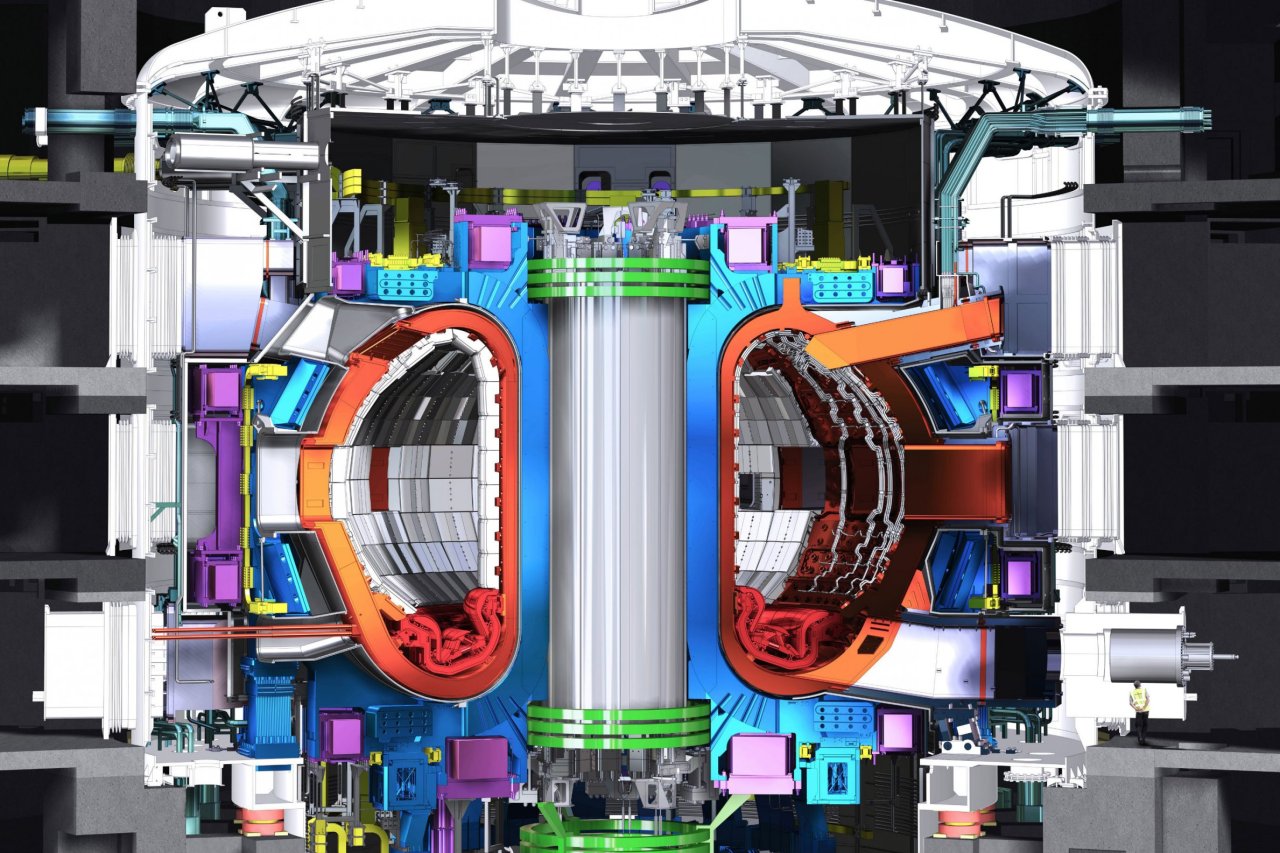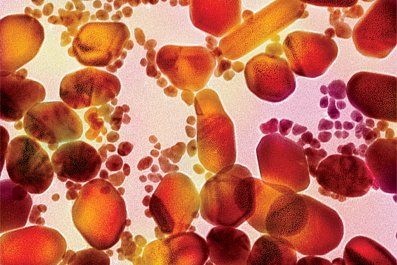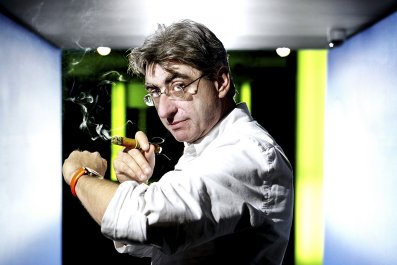Within the next 50 years, scientists will build a fusion power plant to harness the same processes that make the sun shine. The moment this star winks on, everything will change.
Of course, that's also what Cold War scientists said half a century ago when, after the uncontrolled release of fusion energy in hydrogen bombs, they took an interest in the controlled release of fusion energy in reactors. The Cold War is long over, but the same promise keeps getting made today. The difference, though is that now a number of companies - many in the commercial sector - are working in a nuclear field that was once only the domain of superpowers.
A century ago, scientists gleaned the first insights into how stars, like our sun, convert hydrogen into helium by the process of fusion and, as a byproduct, release colossal amounts of energy. By the mid-1950s machines to fuse light elements were working in the Soviet Union, the United Kingdom, the United States, France, Germany and Japan.
The dream has always been of near limitless energy. While a 1,000 megawatt coal-fired power plant requires 2.7 million tons of coal per year, a fusion plant of the kind planned for the second half of this century will only require 250 kilos of fuel per year and present fewer radioactive waste problems than conventional nuclear reactors.
The basics are simple. Take two forms of hydrogen, typically deuterium and tritium, squash them together, and you get a helium atom and a subatomic particle called a neutron. The product of this reaction (called D-T fuel) is a fraction lighter than its atomic ingredients and by Einstein's famous equation E=mc2 (energy released equals the lost mass multiplied by the speed of light squared), that minuscule loss of mass results in a colossal release of energy.
The challenge is that the atomic ingredients of fusion, like all positively-charged nuclei, repel. But they can be forced to fuse together in high density, high temperature environments, such as the core of our sun, where fusion takes place at temperatures of around 15 million degrees celsius. In fusion machines, temperatures need to be above 150 million degrees celsius to fuse nuclei, but that is enough to turn any Earthly material into a particle soup called a plasma.
This problem was cracked by the Soviet Union in the late 1950s with a "magnetic bottle," a doughnut-shaped chamber called a tokamak, where the superhot plasma of fusion fuel is held safely away from the furnace's walls with magnetic fields. Even so, we had to wait until 1991, when the Joint European Torus (JET) in Culham, UK, achieved the world's first significant and controlled release of fusion power, then in 1997 released 16 megawatts of power from a total input of 24 megawatts. JET remains the most powerful tokamak in existence. But as new experiments are planned at JET for 2017 to break their own record of 16 megawatts of fusion power, the next generation of tokamak is already under construction in Cadarache, near Marseille.
This month, after pouring some 14,000 tons of concrete over 6,000 tons of steel, the 9,000 square meter basemat of the International Thermonuclear Experimental Reactor will be complete. The plan is for ITER to generate 500 megawatts of fusion power, paving the way for a 1000 megawatts demonstration power plant by 2040, called DEMO. But though ITER means "the way" in Latin, cynics joke that it can also mean "journey" and that it has been a long and troubled one. The cost is $20bn though some estimate it will be more like $50bn - about 10 times the original estimate - and that it will not begin its first fuelled experiments before 2027, more than a decade behind schedule, prompting fears for its future.
Despite the daunting technical challenges, the promise of an age of clean, cheap energy is sufficiently strong to lure commercial funding, too. Norman Rostoker, a physicist at the University of California, Irvine, co-founded Tri Alpha in 1998. The company has raised $150m from the likes of Microsoft co-founder Paul Allen, Goldman Sachs and the Russian government's venture-capital firm, Rusnano and believes that commercial fusion power will be possible in around a decade.
Tri Alpha proposes ditching the conventional deuterium-tritium fuel in favor of fusing protons with a boron isotope, boron-11, to create three helium nuclei, also known as alpha particles (hence the company name). These are charged, so they could be guided by magnetic fields into a device that would convert their energy into electricity. There's a catch, however. Igniting this fuel would require temperatures of about a billion degrees Celsius - 20 times higher than the temperature of JET. They propose using the plasma itself to make the magnetic field, then creating and colliding rings of plasma, an idea tried in several US laboratories in the 1980s.
With its current test machine, a 10 meter linear reactor called the C-2, Tri Alpha has shown that the colliding supersonic smoke rings of plasma can merge, and that the resulting fireball can sustain itself for up to five milliseconds. Now they are planning an upgraded machine, called C-2U.
Members of the tokamak tribe point out that, even if they find out how to turn alpha particles into electricity, the energy created in each fusion event would be only about half that released by D–T fuel. By comparison, JET has already achieved much higher energies and longer confinement times - of the order of 1000 times the duration.
General Fusion in Canada is another commercial venture. They are developing an idea first pursued by the US Naval research laboratory in the 1970s and are backed by $65m, 80% from private sources that include Cenovus Energy, an oil company, and the investment company of Jeff Bezos, founder of Amazon.
In their approach, a plasmoid of D–T will be injected into a spinning vortex of molten lead and lithium. This shell of liquid metal will then be compressed by steam-driven pistons crushing the plasmoid and creating fusion. The energy released from fusion heats the liquid metal, and that heat is extracted to make steam to drive a turbine and produce electricity. They have already built a prototype, consisting of a meter-wide spherical reaction chamber bristling with 14 pneumatically-driven pistons. To create as much energy as they invest they estimate that they will need a chamber some three times the size and of the order of 400 pistons.
Meanwhile, more concepts are being pursued by Helion Energy in Redmond, Washington; Lawrenceville Plasma Physics in Middlesex, New Jersey; and the Emc2 Fusion Development Corporation, Santa Fe, New Mexico.
Steven Cowley, Chief Executive Officer of the UK Atomic Energy Authority, worries that venture capitalists are so intoxicated by the seductive idea of a plucky entrepreneur who can beat the big guys that they are not thinking straight and are likely to be wasting their money. He adds that this is by no means the first boom in entrepreneurial fusion companies. Interest was high during the oil shock, when the company KMS Fusion carried out the first laser-induced fusion experiments in 1974. Bob Guccione, who founded the magazine Penthouse, sank $20m of his money during the 1980s into a "compact tokamak" (the idea lives on today, in an Italian/Russian project called IGNITOR). Star Scientific was established in Australia in the late 1990s, when concerns about climate change became acute, to try to devise its own fusion-based energy source.
Visionaries now look forward to the first fusion burn, when energy released in the reactor is enough to sustain the plasma, so long as you nourish it with fuel. That will be as historic as December 2nd 1942, when the first man-made controlled nuclear chain reaction took place underneath the University of Chicago Stagg Field football stadium. Despite all the private efforts, however, the first fusion burn still seems most likely in a Government funded tokamak because this approach rests on a very solid foundation of earlier research, notably JET.
"ITER will achieve that—no one else is close," says Cowley. "That's when we'll have a star."






























